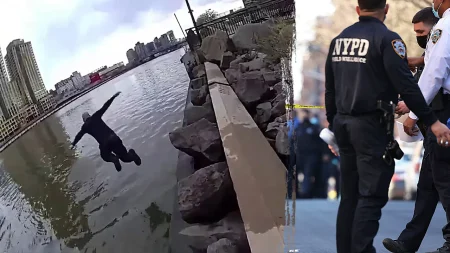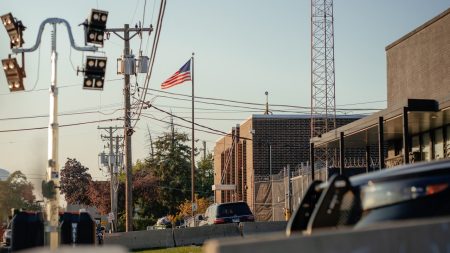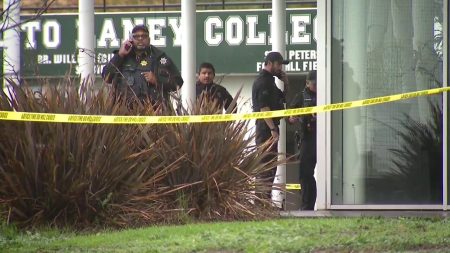Pathway to Peace: Israel Signals Cooperation with White House on Gaza War Endgame
Israel’s Conditional Agreement Opens Door to Diplomatic Resolution
In a significant diplomatic development, Israel has expressed willingness to cooperate with the White House on initiatives to bring the devastating Gaza conflict to a close, according to senior officials familiar with the ongoing negotiations. This potential breakthrough comes after months of intensive behind-the-scenes discussions and mounting international pressure to end hostilities that have claimed thousands of lives and created a humanitarian crisis of staggering proportions. Speaking on condition of anonymity, an Israeli government source characterized the discussions as “constructive and forward-looking,” though emphasized that Israel’s security requirements remain non-negotiable. “We are committed to working with our American allies to find a sustainable solution,” the official stated, “but any agreement must ensure that Israeli civilians will never again face the terror they experienced on October 7th.” The Biden administration has been pressing for a resolution that addresses both immediate humanitarian concerns and longer-term stability, walking a delicate diplomatic tightrope between supporting Israel’s security needs while responding to growing international alarm over civilian casualties and suffering in Gaza. This measured cooperation represents the most promising development in months, though significant obstacles remain before any ceasefire can materialize.
The tentative cooperation signals a potential inflection point in a conflict that has dramatically reshaped regional dynamics and strained international alliances. Since hostilities erupted following Hamas’s October attack, the war has evolved from what Israel initially described as a targeted operation against terrorist infrastructure into a prolonged conflict with far-reaching humanitarian implications. More than 35,000 Palestinians have been killed, according to Gaza health officials, while approximately 1,200 Israelis died in the initial Hamas attack, with dozens more taken hostage. The extensive destruction of Gaza’s infrastructure has created what UN agencies describe as “catastrophic” humanitarian conditions, with widespread shortages of food, medicine, clean water, and shelter. International aid organizations report that over 80% of Gaza’s 2.3 million residents have been displaced, many multiple times, as fighting has engulfed nearly every part of the densely populated territory. Against this backdrop, Israel’s willingness to engage with American-led diplomatic initiatives represents a potentially significant shift in approach, though Prime Minister Benjamin Netanyahu continues to face domestic political pressures from coalition partners who oppose any compromise that might appear to leave Hamas with capability to regroup.
Hamas’s Disarmament: The Central Challenge to Lasting Peace
The most formidable obstacle to translating diplomatic engagement into actual peace remains the fundamental question of Hamas’s future. Israeli officials have consistently maintained that any resolution must include the complete dismantling of Hamas’s military capabilities and governance structures in Gaza. “There can be no return to the status quo where a terrorist organization controls territory adjacent to Israeli communities,” stated a senior Israeli military official. This position creates a seemingly intractable problem: Hamas has shown no indication it would voluntarily relinquish either weapons or political control, while Israel insists this is a non-negotiable condition for ending military operations. U.S. diplomats have been exploring various formulations that might bridge this gap, including proposals for phased disarmament under international supervision and transitional governance arrangements that would initially include technocrats not directly affiliated with either Hamas or the Palestinian Authority. Egyptian and Qatari mediators have shuttled between parties, attempting to find acceptable compromise language, but sources close to the negotiations acknowledge the distance between positions remains substantial. “We’re talking about fundamentally different visions for what comes after the fighting stops,” explained a Middle East analyst at the Washington Institute for Near East Policy. “Israel envisions a Gaza without Hamas influence, while Hamas sees the conflict as existential and views disarmament as tantamount to surrender.”
The complexities surrounding Hamas’s future reflect deeper questions about Palestinian governance that have remained unresolved for decades. The Gaza Strip has been under Hamas control since 2007, following their electoral victory and subsequent armed takeover that expelled the Palestinian Authority from the territory. This has created a fragmented Palestinian political landscape, with the Fatah-led Palestinian Authority administering parts of the West Bank while Hamas controlled Gaza. Any post-conflict governance solution must address this fragmentation, a challenge that has defeated previous international efforts. The Biden administration has reportedly been promoting a revitalized Palestinian Authority role in Gaza’s governance, potentially as part of a broader initiative that would include commitments toward eventual Palestinian statehood. Such proposals face significant opposition from elements within Israel’s governing coalition, who reject Palestinian statehood and favor indefinite Israeli security control over Gaza. Meanwhile, the Palestinian Authority itself faces questions about its capacity and legitimacy to govern Gaza after a 17-year absence. “The governance vacuum is perhaps the most dangerous element of the post-conflict landscape,” warned a former U.S. envoy to the Middle East peace process. “Without a credible alternative to Hamas that Palestinians can accept, any military gains against the organization risk being temporary.”
Humanitarian Crisis Demands Immediate Action Amid Diplomatic Maneuvering
While diplomatic efforts focus on the war’s endgame, the immediate humanitarian catastrophe continues to deteriorate, creating moral and practical imperatives for faster action. International aid organizations report unprecedented levels of food insecurity, with the UN World Food Programme warning that famine conditions are imminent in northern Gaza unless aid deliveries increase substantially. Healthcare infrastructure has been devastated, with only 13 of Gaza’s 36 hospitals functioning even at partial capacity. The destruction of water treatment facilities has created conditions for disease outbreaks, with medical professionals reporting increasing cases of hepatitis, diarrheal diseases, and skin infections. Children, who comprise nearly half of Gaza’s population, face particular vulnerability, with UNICEF documenting alarming rates of malnutrition and psychological trauma. Aid workers describe a population in crisis, with one Médecins Sans Frontières physician stating, “We’re seeing diseases we can easily prevent and treat becoming fatal because the healthcare system has collapsed.” Israel has responded to international criticism by pointing to Hamas’s continued rocket fire and alleged diversion of humanitarian aid, while gradually increasing the number of aid trucks permitted to enter Gaza. However, aid organizations maintain that current levels remain far below what’s needed to address the scale of suffering.
The humanitarian dimensions have increasingly influenced diplomatic calculations, particularly as European and Arab partners have pressed the United States to leverage its relationship with Israel to secure greater aid access and civilian protections. The Biden administration has responded with increasingly public calls for Israel to minimize civilian casualties and facilitate humanitarian assistance, while simultaneously defending Israel’s right to self-defense in international forums. This balancing act reflects the complex geopolitical context in which peace efforts are unfolding. Beyond the immediate Israel-Hamas confrontation, the conflict has exacerbated tensions across the region, with Iran-backed groups in Lebanon, Syria, Iraq, and Yemen launching attacks against Israeli and American targets in solidarity with Hamas. The potential for wider regional conflagration adds urgency to finding a resolution, with Jordan’s King Abdullah II warning recently that “continued military escalation threatens to pull the entire region into a catastrophic war.” Regional dynamics are further complicated by evolving positions among Arab states that had been normalizing relations with Israel before October 7th, with the Saudi-Israel normalization process now frozen and public opinion in Egypt and Jordan increasingly critical of perceived American bias toward Israel.
Toward a Sustainable Resolution: The Path Forward
As diplomatic efforts intensify, the outlines of a potential framework for ending hostilities are gradually emerging, though significant gaps remain. According to sources familiar with the discussions, the current American-led proposal envisions a phased approach beginning with a temporary ceasefire coupled with substantial increases in humanitarian aid and the release of remaining Israeli hostages in exchange for Palestinian prisoners. This initial phase would be followed by a more comprehensive agreement addressing Gaza’s reconstruction, governance, and security arrangements. The most contentious elements center on who would provide security in a post-conflict Gaza and what role, if any, Hamas would have in governance structures. International peacekeeping forces have been proposed as one potential solution, though previous peacekeeping missions in the region have had mixed results at best. Another proposal involves training a new Palestinian security force drawn primarily from Gaza residents not affiliated with Hamas, though building such a force would take considerable time and faces questions about effectiveness and legitimacy. Economic reconstruction represents another critical component, with preliminary estimates suggesting Gaza will require more than $40 billion in rebuilding assistance. The Biden administration has indicated willingness to lead international reconstruction efforts, but has emphasized that funding will be contingent on governance structures that prevent Hamas from rearming or reasserting control.
The coming weeks will prove decisive in determining whether diplomatic progress can translate into concrete steps toward ending the conflict. Both Israeli and American officials have privately expressed hope that a framework agreement could be reached before Israel proceeds with threatened military operations in Rafah, where over a million displaced Palestinians have sought refuge. However, significant challenges remain, not least the fundamental question of whether Hamas can be persuaded to accept terms that would substantially diminish its power. International pressure continues to build, with the International Court of Justice recently ordering Israel to take all necessary measures to prevent genocide in Gaza, a ruling Israel rejected as unfounded but which nevertheless increases diplomatic pressure for resolution. As one veteran Middle East diplomat observed, “We’re approaching a moment of truth where all parties will need to make difficult compromises or risk prolonging a conflict that has already extracted a terrible human cost.” The path to sustainable peace remains narrow and fraught with obstacles, but the willingness of Israel to engage with White House peace initiatives, however conditionally, provides a glimmer of hope in a conflict that has seen precious little. The ultimate test will be whether this diplomatic opening can translate into concrete actions that end the suffering of civilians caught in the crossfire and create conditions for lasting stability.










